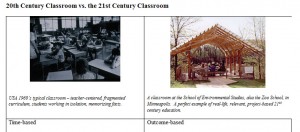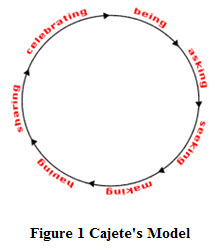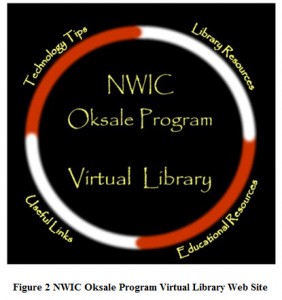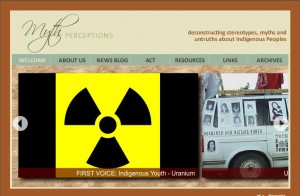Aboriginal Canada Portal – Teacher Resources
http://www.aboriginalcanada.gc.ca/acp/site.nsf/eng/ao31045.html
I realize that the Aboriginal Canada Portal has been mentioned a couple of times, but the content that interested me at this site was the Resources for Teachers page. The many resources are divided into two sections – Educational Resources and Lesson Plans and Activities. I even noticed a document from UBC’s Faculty of Education – a grade 12 unit lesson plan on Aboriginal Elders.
One of the resources listed is GoodMinds.com, which is a source for educational resources for Native American, First Nations, Indigenous and Aboriginal Studies. I have purchased literacy materials from them in the past for the classroom. There are so many links here that it will take awhile to get through them.
September 27, 2010 No Comments
21st Century Schools Website
While researching for my term paper I came across the 21st Century Schools Website. This US-Based , but globally intended, Website advocates for a “new paradigm” in education. They believe that although the tools of modern technology are available for collaborative/innovative learning, they are not currently used to their fullest.
If you navigate to the “What is 21st Century Education? Tab, you’ll find a good description of the site and what it seeks to accomplish. Scroll down this page to find a great summary table (image below) of the differences between 20th Century education and 221st Century education. After that, check out the “Curriculum and Instruction” and “Resources” tabs for many interesting and useful links.
September 25, 2010 No Comments
An Indigenous Approach to Creating a Virtual Library of Education Resources
This article describes how students in the “Library Instruction and Information Literacy” class in the Graduate School of Library and Information Science at the University of Texas at Austin incorporated a service-based learning model drawing on indigenous learning styles to create a virtual library for students and educators at a tribal college. The project deliverables were planned for the Northwest Indian College (NWIC) Teacher Training Program, Oksale and were based on the theories of Native American educator Dr. Gregory Cajete.
Cajete’s theory describes the prescription for a fulfilled life through the cycle of “being, asking, seeking, making, having, sharing, and celebrating”. This cycle was seen as a means to understand (in Cajete’s words):
- One’s true face (character, potential, identity)
- One’s true heart (soul, creative self, true passion)
- One’s foundation (true work, vocation)
The design of the site (see Figure 2) used traditional Lummi colors (black, red, white, and yellow) and images (raven, frog, eagle, and salmon) to increase users’ familiarity and comfort with the site.
Cajete asks educators to “engender a commitment to service rather than competition, promote respect for individual, cultural, and biological diversity, and engage students in learning processes that facilitate the development of their human potential through creative transformation”.
September 25, 2010 No Comments
Improving Education on Reserves: A First Nations Education Authority Act
This is an interesting paper offered by the Caledon Institute that discusses the 2008 perspective on the present state of education for on reserve students, the Canadian Federal Government’s stance to this condition, and a prescription for improving education for on reserve students. This paper provides a really good summary and makes for interesting reading. The following is a very brief synopsis.
Present State (2008) and Canadian Government’s Stance
- 1996 – 60% of First Nations on reserve residents aged 20-24 had not completed high school or obtained an alternate diploma. (From Canadian Census data)
- 2001 – Statistic was unchanged.
- 2006 – Statistic was unchanged.
- Students now require more than grade 12 education to succeed, however grade 12 is the gateway to higher education.
- Canadian government (Indian and Northern Affairs Canada 2004) is in unanimous agreement on the desperate need for improvement in education for those living on reserves.
- Data suggests that funding for on reserve education is similar to provincially funded schools although this is not the perception of First Nations peoples.
- There is consensus on the need for parity for First Nations schools.
Prescription for Improving On Reserve Education
- Agreement that there is a need for money + good schools
- There is also a need for the infrastructure to support and maintain a good education system addressing the areas of curriculum development and capital facilities planning.
- The Cree School Board, recognized under the Quebec Education Act is an example of such a system.
- For those interested, there is the following reference to additional models: “Sharing Our Success: Ten Case Studies in Aboriginal Schooling” (page 11)
- The paper goes on to describe the background and role of the First Nations Education Authority Act that seeks to address the need for First Nations infrastructure planning across the Provinces.
http://www.caledoninst.org/Publications/PDF/684ENG.pdf
—————————————————————————————
For more information about the Caledon Institute, here is a brief summary quoted from their Website:
The Caledon Institute is a social policy think tank.
“Established in 1992, the Caledon Institute of Social Policy is a private, non-profit organization with charitable status. It is supported primarily by the Maytree Foundation, located in Toronto. Caledon is an independent and critical voice that does not depend on government funding and is not affiliated with any political party.
The Caledon Institute of Social Policy does rigorous, high-quality research and analysis; seeks to inform and influence public opinion and to foster public discussion on poverty and social policy; and develops and promotes concrete, practicable proposals for the reform of social programs at all levels of government and of social benefits provided by employers and the voluntary sector. Caledon’s work covers a broad range of social policy areas including income security (e.g., pensions, welfare, child benefits, Employment Insurance, benefits for Canadians with disabilities), community capacity-building, taxation, social spending, employment development services, social services, disability supports and health.”
September 25, 2010 No Comments
Classroom English will be the death of Aboriginal languages
This Australia-based article discusses concerns around reducing the amount of time spent teaching in the local (Aboriginal) language down to a mandated one hour/day. Several reasons for doing so are listed, including the argument that Aboriginal employment is very low because education levels are very low because education is primarily conducted in English. It is argued that forcing students to learn in English will increase English literacy rates along with providing students with an education.
The author of this article disagrees with this strategy, noting that there are flaws in the logic, including the fact that low education levels are not the only reason for low employment. There are other reasons that can be cited, such as bureaucratic regulations requiring completion of literacy courses prior to gaining access to certain jobs.
Some of the areas of concern cited for moving to a one hour a day education in English are:
- Poor attendance will likely become lower
- Parental support may drop
- Turnover of teachers may increase
- Indigenous languages are further at risk
The article goes on to discuss the importance of preserving Aboriginal languages.
For those interested, several responses to the article follow it.
http://www.crikey.com.au/2008/11/20/classroom-english-will-be-the-death-of-aboriginal-languages/
September 25, 2010 1 Comment
Alberta’s Information Connection
The University of Alberta has put together the “First Nations Information Connection” . You will be able to find articles, journals, books, and other publications through this site. Most of the resources are freely accessible and easy to find.
September 19, 2010 No Comments
MythPerceptions
Myth Perceptions is a site that I came across that might help people understand First Nations culture better. Many people (not necessarily those taking this course) but cultural misconceptions and stereotypes exist (regardless of the culture). This site provides information to demystify those ideas. It also presents issues that First Nations people face.
September 19, 2010 No Comments
Tradition and Literature
I came across the “Using First Nations Traditional Literature in the Classroom” site. It is created by the Saskatoon Public Schools Online Resources Centre. It provides educational resources to teachers. There are outlined activities for oral tradition, examining folklore, and story-telling. These are all important aspects to First Nations culture. This site helps to keep those alive for students and teaches them about those traditions. This can be useful to help educators incorporate tradition and culture into the classroom.
September 19, 2010 No Comments





